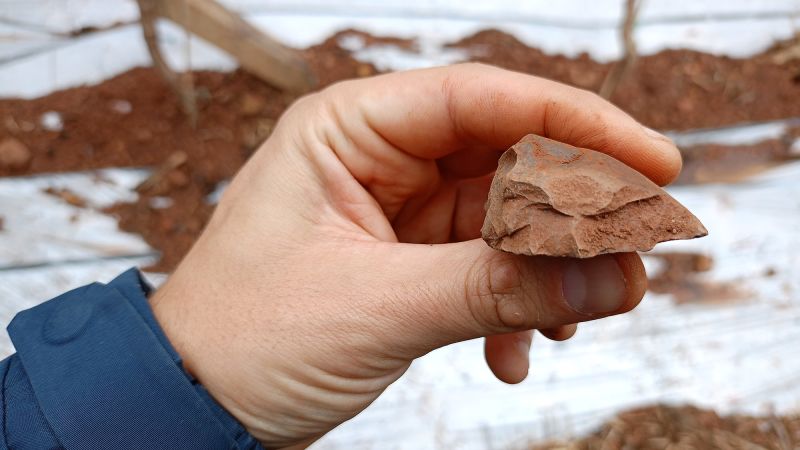In a groundbreaking discovery made at the Longtan site in Yunnan province, southwest China, archaeologists have unearthed stone tools that may significantly alter the current understanding of human origins during the Stone Age. These tools, believed to be crafted between 60,000 and 50,000 years ago, are made in a Neanderthal-associated Quina style, a first for East Asia. This finding raises intriguing questions about whether Neanderthals migrated eastward into regions like China or if other ancient humans developed similar tool-making techniques independently.
The excavation at Longtan, conducted over the years 2019 and 2020, unearthed hundreds of stone artifacts discovered in trenches dug through the site’s reddish, silty clay. Experts believe that the tools were designed to withstand the harsh climates similar to those encountered by Neanderthals in Europe during the same period, suggesting a sophisticated adaptation to their environment. The research indicates that while Neanderthals lived across Eurasia for around 400,000 years, there has previously been no evidence of their remains east of the Altai Mountains in southern Siberia.
Among the notable findings is the fact that previous discoveries of Neanderthal bones and skeletons have commonly occurred alongside Quina stone tools in various sites across Western Europe, including La Quina in southwest France. The implications of the tools found in Longtan are significant, presenting two potential scenarios: either Neanderthals migrated to the East, or other species of ancient humans independently developed similar tool-making techniques out of necessity. According to Davide Delpiano, a study coauthor and postdoctoral fellow at the University of Ferrara, this discovery documents a tradition far from its traditionally associated region, challenging the prevailing theories regarding Neanderthal territories.
The spread of Neanderthals’ cultural practices is not simply an academic interest but could reshape views on human evolution. The toolkit from Longtan includes a variety of tools such as scrapers, stone points akin to spearheads, and notched instruments resembling saws. These tools would have equipped Neanderthals for hunting the migrating herds in Europe, including species like reindeer, horses, and bison — essential for survival in their time. Notably, Quina tools were characterized by their long-lasting design and were often retouched, indicating a lifestyle marked by mobility in search of resources.
Further analysis of ancient pollen grains from the site suggests that the environmental conditions in southwest China during the period in question were somewhat analogous to those of Europe. However, the absence of animal remains at Longtan leaves a gap in knowledge, thus making it uncertain whether the ancient humans in that region hunted similar animals to their European counterparts.
The implications of the findings extend to proposing that Neanderthals could have encountered other ancient humans in their territories, potentially facilitating the exchange of stone tool technology. Supporting this notion, discoveries from Denisova Cave in the Altai Mountains reveal that Neanderthals occupied the region about 200,000 years ago, near the time when their sister species, the Denisovans, roamed Asia. The study suggests that while hard evidence of Neanderthals in China remains elusive, they might have explored eastern territories or influenced local hominins, such as the Denisovans, by sharing tools and technologies that suited their ecological landscape.
Another plausible theory posited in the study is that the Longtan inhabitants could have been Denisovans or an altogether unknown species who independently developed similar stone tools in response to their environment. While some experts agree on the potential presence of Neanderthals in China, they argue that much remains uncertain until concrete evidence, like a Neanderthal fossil, is found. As John Shea, a professor of anthropology at Stony Brook University, aptly stated, “Stone tools are not ID cards,” underscoring the complexity in affirming cultural or species affiliation based solely on artifacts.
This new study contributes to an ongoing discourse regarding human evolution in Asia, highlighting the role of Eastern and Southeastern Asia as significant regions in the investigation of human origins. Experts like Ben Utting from the Smithsonian’s National Museum of Natural History assert that these findings challenge the long-standing narrative that viewed these areas as cultural ‘backwaters.’ Instead, evidence suggests that the ancient civilizations residing in Asia exhibited dynamic and complex behaviors comparable to those in other regions during the same time frame. As research continues, the Longtan discovery prompts further exploration and re-evaluation of the interconnections between ancient human species across the globe.



